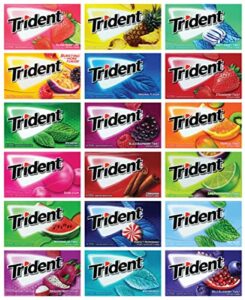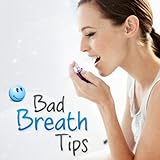In our step-by-step guide, “How to freshen breath with mouthwash after eating,” we aim to provide you with simple and effective methods to combat bad breath after a meal. We understand that having fresh breath is important for both personal confidence and social interactions. With our guide, you will learn how to properly use mouthwash to eliminate unwanted odors and keep your breath smelling fresh throughout the day.
Freshen your breath effortlessly after meals
Choose a Mouthwash
Choose a mouthwash that is specifically designed to freshen breath and combat bad breath caused by food. Look for mouthwashes that contain antibacterial ingredients and have a refreshing flavor. These mouthwashes are formulated to target the bacteria in your mouth that can cause bad breath, helping to keep your breath fresh throughout the day. To select the right mouthwash for you, read the label carefully and look for ingredients such as cetylpyridinium chloride (CPC) or chlorhexidine, as these are known to have antibacterial properties. Additionally, opt for a mouthwash that has a flavor you find pleasant, such as mint or citrus, as this can make the experience more enjoyable. By choosing a mouthwash that specifically targets bad breath and has antibacterial properties, you can effectively freshen your breath and maintain good oral hygiene.
Preparation
To properly prepare for rinsing your mouth with mouthwash, follow these steps:
- Pour the recommended amount of mouthwash into a cup or the cap of the bottle. Make sure to read the instructions on the bottle to determine the appropriate amount.
- Keep a timer or clock nearby to help you keep track of the recommended rinsing time. This will ensure that you rinse for the correct duration, as specified by the mouthwash brand.
By pouring the right amount of mouthwash and using a timer, you can ensure effective and thorough rinsing of your mouth. Remember to follow the recommended instructions provided by the manufacturer for the best results.
Swish and Rinse
To properly execute the “Swish and Rinse” technique, start by pouring a mouthful of mouthwash into a cup. Take a sip and hold it in your mouth, making sure to not swallow it just yet. With your lips sealed, gently swish the liquid around your mouth, using your tongue to guide it between your teeth and along your gumline. Maintain this swishing motion for the recommended amount of time, which is typically around 30 seconds to 1 minute. As you continue to swish, feel the refreshing sensation as the mouthwash reaches every nook and cranny of your oral cavity, effectively killing bacteria and freshening your breath. Once the time is up, spit out the mouthwash into the sink and rinse your mouth with water. Marvel at the clean, minty-fresh feeling that the swish and rinse technique has bestowed upon your mouth.
Spit it Out
Spit out the mouthwash into the sink after the recommended rinsing time. It is important to avoid swallowing it, as some mouthwashes contain ingredients that are not meant to be ingested. Simply lean over the sink and let the mouthwash flow out of your mouth. Ensure that you expel all the mouthwash from your mouth, making sure none of it remains. Spitting it out into the sink is the proper way to dispose of the mouthwash, as it allows for easy cleanup and prevents any accidental ingestion. Remember, it’s crucial to follow this step to ensure your safety and the effectiveness of the mouthwash.
Avoid Eating or Drinking
To maximize the effectiveness of the mouthwash, avoid eating or drinking anything for at least 30 minutes after rinsing. This simple step is crucial in allowing the mouthwash to continue working and freshening your breath. We recommend refraining from consuming any food or beverages during this time to ensure the mouthwash can fully do its job.
By abstaining from eating or drinking for at least 30 minutes, you give the active ingredients in the mouthwash sufficient time to penetrate and eliminate bacteria, plaque, and bad breath-causing compounds. This waiting period allows the mouthwash to work effectively, providing you with longer-lasting freshness.
Remember, it may be tempting to grab a quick snack or drink, but for the best results, exercise patience and wait for that 30-minute window to pass. Your breath will thank you for it!
Repeat as Needed
If you still feel that your breath needs freshening, here’s how you can repeat the process of using mouthwash after eating:
- Take a fresh cup or capful of mouthwash.
- Pour the desired amount of mouthwash into your mouth.
- Swish the mouthwash around your mouth for about 30 seconds to 1 minute.
- Make sure to reach all areas of your mouth, including the back of your throat.
- Spit out the mouthwash into the sink.
- Rinse your mouth with water for a few seconds to remove any leftover mouthwash.
- Gently gargle with water for a few seconds, if desired.
- Spit out the water into the sink.
- If needed, adjust the amount of mouthwash and rinsing time based on your preference and the strength of the mouthwash.
- Repeat this process as many times as necessary until you feel your breath is fresh and clean.
Remember, it’s important to read and follow the instructions on the mouthwash label, as some brands may have specific guidelines for use.
The Power of Minty Freshness
In conclusion, freshening your breath with mouthwash after eating can be an effective way to combat bad breath and maintain a pleasant oral hygiene routine. Throughout this guide, we have highlighted the importance of choosing an alcohol-free mouthwash, the proper technique for rinsing, and the ideal timing for using mouthwash after meals. By following these steps, you can confidently tackle bad breath and enjoy the benefits of a fresh and minty mouth. Remember, maintaining good oral hygiene not only boosts your confidence but also promotes a healthy smile. So let’s take care of our breath, one rinse at a time!
Freshen Your Breath
Tips for Properly Using Mouthwash after Eating
- First, pour the recommended amount of mouthwash into a small cup or the cap of the mouthwash bottle
- Take a small sip of the mouthwash and swish it around in your mouth for about 30 seconds to 1 minute. Make sure to reach all areas of your mouth, including your teeth, gums, and tongue
- During this time, try to gargle with the mouthwash to reach the back of your throat as well, if possible
- Spit out the mouthwash into the sink. Do not swallow it
- Rinse your mouth with water to remove any residual mouthwash taste
- It’s important to read and follow the instructions provided on the mouthwash bottle, as different brands may have slightly different usage guidelines
- If you experience any discomfort or irritation while using mouthwash, discontinue use and consult your dentist or healthcare professional
Addressing Common Questions about Mouthwash after Eating
Have you ever tried using mouthwash after eating and noticed a difference in your breath?
Yes, we have tried using mouthwash after eating and noticed a difference in our breath. Mouthwash is designed to help freshen breath by killing bacteria and neutralizing odor-causing compounds in the mouth. After using mouthwash, we felt a cleaner and fresher sensation in our mouth, which helped improve our breath. However, it’s important to note that the effectiveness may vary depending on individuals and the specific mouthwash used. Additionally, maintaining good oral hygiene practices, such as brushing and flossing regularly, is also crucial for fresh breath.
Do you have any concerns about the safety or side effects of using mouthwash after eating?
We understand that you may have concerns about the safety and side effects of using mouthwash after eating. It’s important to note that mouthwash is generally considered safe for most individuals when used as directed. However, there are a few things to keep in mind.
Some mouthwashes contain alcohol, which can cause a temporary burning sensation or dryness in the mouth for some people. If you have a sensitive mouth or are prone to dryness, you may want to choose an alcohol-free mouthwash.
Additionally, using mouthwash immediately after eating may not be as effective as waiting for some time. This is because food particles can dilute the mouthwash and reduce its effectiveness. It is generally recommended to wait at least 30 minutes after eating before using mouthwash for optimal results.
In rare cases, some individuals may have allergic reactions or other sensitivities to certain ingredients in mouthwash. If you experience any adverse reactions such as swelling, rash, or difficulty breathing, it is important to discontinue use and consult a healthcare professional.
If you have specific concerns or medical conditions, it’s always a good idea to consult with your dentist or healthcare provider. They can provide personalized advice based on your individual needs and circumstances.
Overall, while there may be some minor considerations, using mouthwash after eating is generally safe and can be a beneficial addition to your oral hygiene routine.
Are you looking for a solution to freshen your breath after eating?
Yes, we understand the importance of maintaining fresh breath after eating. When it comes to finding a solution, there are a few options that may help. Some people find that chewing sugar-free gum or using breath mints can temporarily freshen their breath. Regular brushing and flossing, along with using mouthwash, can also help to prevent bad breath caused by food particles remaining in the mouth. It’s important to remember that chronic bad breath may be a sign of an underlying dental or medical condition, so if the problem persists, it’s advisable to consult a dentist or healthcare professional for further guidance.
Are you aware that certain foods can leave a lingering odor in your mouth?
Yes, we are aware that certain foods can leave a lingering odor in your mouth. Some foods, such as garlic, onions, and certain spices, contain compounds that can be released when they are broken down in your mouth. These compounds can then be absorbed into your bloodstream and carried to your lungs, resulting in a noticeable odor on your breath. Additionally, foods that are high in protein can also contribute to bad breath as they can be broken down by bacteria in your mouth, producing sulfur compounds that have an unpleasant smell. It’s important to note that practicing good oral hygiene, such as brushing your teeth and tongue, flossing, and using mouthwash, can help minimize the odor caused by these foods.























